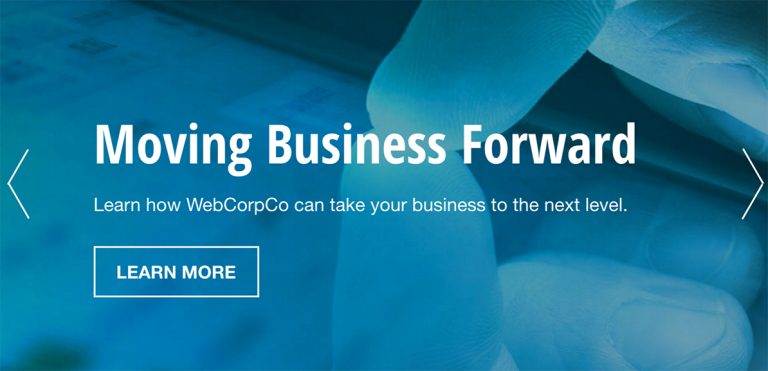Photo by Christina Morillo from Pexels
By The Web Designer
Web Design Trends are ever changing, while they help designers to get an idea about shaping their website’s designs, they also help in improving our web experience. From Parallex animations, to Scrolling transformations and the No-Code movement we have seen it all. But, one web design trend that has managed to stick along is the One-Page website design.
So what really is a one-page website?
A one-page is a single page website as the name says. It has no additional About, Contact, Blog, or Services page. All the contents of the website sits on one long-scrolling page, which is the whole website. The website can have a navigation menu, but it just points to different sections of the same page.
Here’s an example:

Why One-Page website?
A lot of developers I know are not really keen on designing a single page website. It’s difficult to cramp a lot of information in one single page. You literally have no space to waste and the output can look way too stuffed up. Yet, there are several instances where a single page website may actually work better than the traditional multiple page website.
Here are few instances where having a single page website works:
#1 Landing Pages
Landing Pages have one single mission – to convert leads into sales. When you have a visitor on to your landing page, you don’t want to distract them by giving them an overdose about yourself or the business. It is clearly designed to elaborate on one particular product, its features and pricing. So, if you want to get into ‘aggressive selling’, using Landing Pages is recommended than distracting site visitors to check out another freebie.
#2 Personal Website
Using single page website to showcase your portfolio is a clever strategy to intrigue prospective clients. It not only displays your creativity but also keeps the client engaged. Nobody has the time to scroll through pages and pages to find a way to contact you. If it’s simple, clear and straightforward, you’re converting more by doing less!
#3 Events/Webinars
If you want to design a page that promotes an event rigorously and can easily be taken down when the event ends, it’s a good idea to create a single page website. You can always replace the event details with the ‘event ended’ thumbnail and still collect email addresses of site visitors.
Keep this in mind while designing a one page website
While you can assume that designing single page website is fairly easy as there is just one page to work on, but it’s not easy as it sounds. Your website can end up looking stuffy and uninteresting if you don’t plan it well. Here are 5 tips to keep in mind while designing a one page website:
#1 Simplicity
Keep the message of your website clear and simple to understand. Define your sections neatly and clearly and include only relevant information. It’s also a good idea to use a navigation menu and anchor it to the different website sections. The more simple, your website is for the user to navigate, the more it solves the purpose.
#2 Responsiveness
No points for guessing that a single page website must also be mobile-friendly. We have talked about in length, that why does a website need to be responsive, and it still holds true if you have a single page website. If you have to redesign a part of the website to fit better on a mobile device, do it.
#3 Logical
Doing something, just for the heck of it doesn’t really add up. It can lead your customers confused or even ill-informed. If your website doesn’t feel naturally flowing, chances are visitors won’t come back because they’re not sure what to make of it. So, spend sometime in designing a logical layout for your website, though it is just one page, but it should allow users to find exactly what they’re looking for without any hassle or endless scrolling.
#4 Visually Appealing
Don’t hesitate to incorporate media such as images and videos on your website. It maybe just a single page website, but images are a great way to grab a person’s attention. Try to break up long pieces of text with multimedia and keep your users engaged, they would definitely love to scroll right till the end and may just hit that call-to-action button as well! Implementing parallax effect or smooth scrolling experience for users is also a good idea.
#5 Call-To-Action
Undoubtedly, a strong call-to-action is the most important aspect of a one page website, as they designed to more focused than multiple page website. Your CTAs should be noticeable in color and shape, to persuade the users to take action.
But what about SEO?
Okay, so by now you have learned all there is to know about single page websites, but I’m sure many of you’re thinking, how do I optimize one page website for search engines? Honestly, it’s not difficult at all.
As a thumb rule for designing any website, you need to keep the website speed in mind. Site speed and SEO go hand-in-hand. Anything slower than the blink of an eye can seriously hurt your website’s revenue so keep the site loading time in mind while designing the website.
Moreover, with single page websites you don’t really get an opportunity to add internal links but you can still add quality back links for optimization.
Also, if you use relevant keywords throughout each section of your single page website, you’re good to go. Try not to stuff too many keywords into one section that makes it look unnatural, as far as your content is valuable, presentable and easy to understand you’re good to go!
Final Word
We hope that you found this article helpful. Bookmark it and come back to it anytime you want to create a single page website or share it with other designers in your community who will benefit from it. You can find tons of resources online while creating single page websites, make use of templates and take inspiration from other one page websites. Happy Designing!




